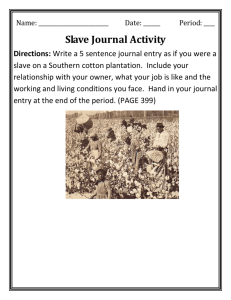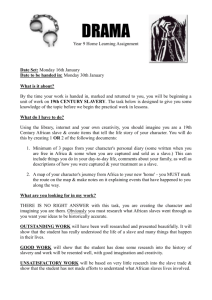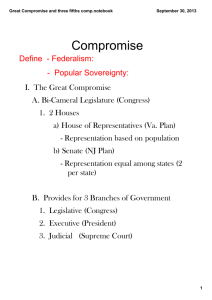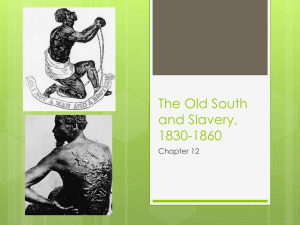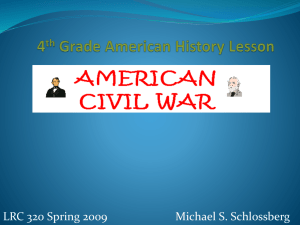Test Prep TS Ch 7-15- Forging and American
advertisement
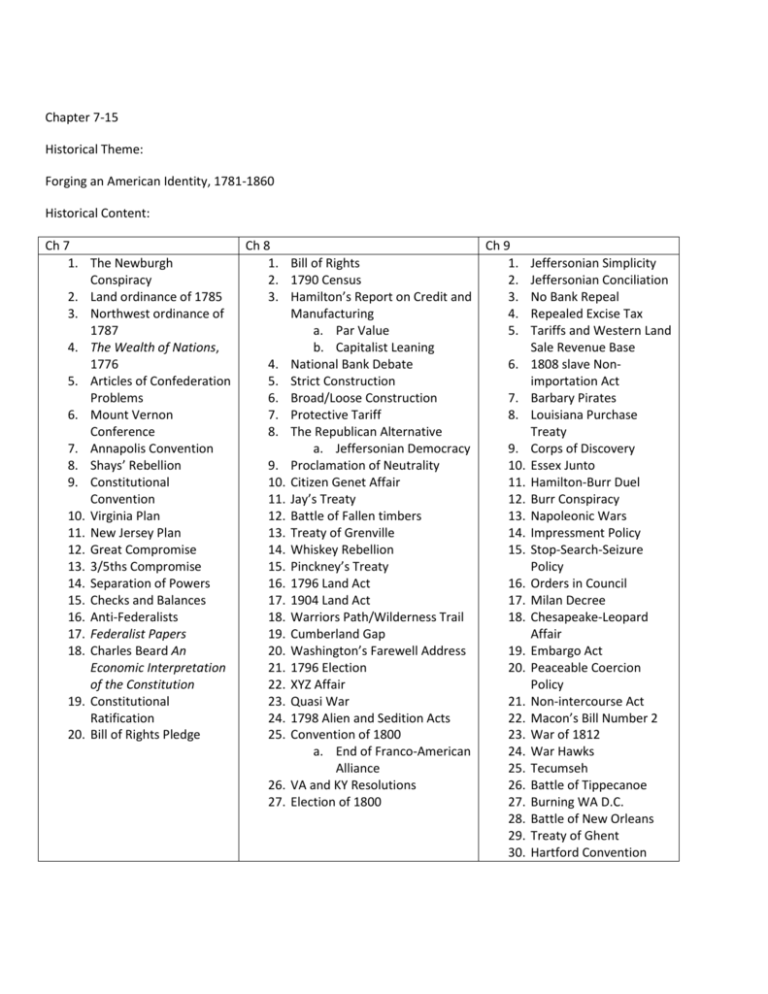
Chapter 7-15 Historical Theme: Forging an American Identity, 1781-1860 Historical Content: Ch 7 1. The Newburgh Conspiracy 2. Land ordinance of 1785 3. Northwest ordinance of 1787 4. The Wealth of Nations, 1776 5. Articles of Confederation Problems 6. Mount Vernon Conference 7. Annapolis Convention 8. Shays’ Rebellion 9. Constitutional Convention 10. Virginia Plan 11. New Jersey Plan 12. Great Compromise 13. 3/5ths Compromise 14. Separation of Powers 15. Checks and Balances 16. Anti-Federalists 17. Federalist Papers 18. Charles Beard An Economic Interpretation of the Constitution 19. Constitutional Ratification 20. Bill of Rights Pledge Ch 8 Ch 9 1. Bill of Rights 1. Jeffersonian Simplicity 2. 1790 Census 2. Jeffersonian Conciliation 3. Hamilton’s Report on Credit and 3. No Bank Repeal Manufacturing 4. Repealed Excise Tax a. Par Value 5. Tariffs and Western Land b. Capitalist Leaning Sale Revenue Base 4. National Bank Debate 6. 1808 slave Non5. Strict Construction importation Act 6. Broad/Loose Construction 7. Barbary Pirates 7. Protective Tariff 8. Louisiana Purchase 8. The Republican Alternative Treaty a. Jeffersonian Democracy 9. Corps of Discovery 9. Proclamation of Neutrality 10. Essex Junto 10. Citizen Genet Affair 11. Hamilton-Burr Duel 11. Jay’s Treaty 12. Burr Conspiracy 12. Battle of Fallen timbers 13. Napoleonic Wars 13. Treaty of Grenville 14. Impressment Policy 14. Whiskey Rebellion 15. Stop-Search-Seizure 15. Pinckney’s Treaty Policy 16. 1796 Land Act 16. Orders in Council 17. 1904 Land Act 17. Milan Decree 18. Warriors Path/Wilderness Trail 18. Chesapeake-Leopard 19. Cumberland Gap Affair 20. Washington’s Farewell Address 19. Embargo Act 21. 1796 Election 20. Peaceable Coercion 22. XYZ Affair Policy 23. Quasi War 21. Non-intercourse Act 24. 1798 Alien and Sedition Acts 22. Macon’s Bill Number 2 25. Convention of 1800 23. War of 1812 a. End of Franco-American 24. War Hawks Alliance 25. Tecumseh 26. VA and KY Resolutions 26. Battle of Tippecanoe 27. Election of 1800 27. Burning WA D.C. 28. Battle of New Orleans 29. Treaty of Ghent 30. Hartford Convention Ch 10 A. Economic Nationalism 1. Second National Bank 2. 1816 Protective Tariff 3. Internal Improvements 4. National/Cumberland Road 5. Era of Good Feelings 6. Virginian Dynasty 7. Rush-Baggot Treaty 8. Convention of 1818 9. Adams-Onis Treaty a. (Transcontinental Treaty) 10. Panic of 1819 11. Missouri Compromise 12. Tallmadge Resolution 13. Clay’s American System B. Judicial Nationalism 1. Marbury v. Madison 2. Fletcher v. Peck 3. Cohens v. Virginia 4. Dartmouth College v. Woodward 5. McCulluch v. Maryland 6. Gibbons v. Ogden 7. Charles River Bridge Case C. Nationalist Diplomacy 1. The Monroe Doctrine D. One-Party Politics 1. Corrupt Bargain 2. Election of 1828 i. Common Man Campaign ii. “Log-Cabin and Hard Cider” Ch 11 1. Nullification Crisis 2. 1828 Tariff 3. South Carolina Exposition and Protest 4. Nullification Doctrine 5. Webster-Hayne Debate 6. State Compact Theory 7. Unionist Theory 8. South Carolina Nullification Ordinance 9. Compromise Tariff of 1833 10. Force Bill 11. 1830 Indian Removal Act 12. Five Civilized Tribes 13. Black Hawk War 14. Seminoles War 15. Cherokee Nation vs. Georgia, 1831 a. Domestic Dependent nation 16. Worcester vs. Georgia, 1832 a. Distinct political community 17. Trail of Tears 18. Bank of United States Recharter War 19. Nicholas Biddle 20. 1832 Election 21. Distribution Act 1836 22. Specie Circular 23. 1837 Panic 24. Second American Political Party System 25. Whig Party 26. 1836 Election 27. Independent Treasury 28. 1840 Election: Whig victory 29. Log-Cabin Hard Cider Campaign 30. Tippecanoe and Tyler Too Ch 12 1. Cotton Gin 1794 2. Cotton Kingdom 3. 1820 Land Law a. Lowered price $1.25/acre b. Lowered minimum plot of land to 80 acres 4. Relaxed Land Laws 5. Preemption Acts 1830 and 1841 a. Squatters Rights b. 160 acres at $1.25/acre 6. Graduation Act 1854 a. Decreased cost of unsold lands to 12.5 cents/acre after 30 yrs 7. John Deer’s Steel Plow 1837 8. Cyrus McCormick’s Reaper 1831 9. National Road 1840s 10. Philadelphia-Lancaster Turnpike 1794 11. Stagecoaches 12. Flatboats 13. Steamboat 1807 14. Erie Canal 1825 15. Railroad 1830s 16. Clipper Ship 17. Federal Govt Role in Internal Improvements 18. Samuel Morse’s Telegraph 19. Machine-made Clothes 20. Singer’s Sewing Machine 1846 21. Goodyear and vulcanized rubber 1844 22. Samuel Slater Textile Mill 23. Boston Manufacturing Co. a. The Lowell System b. Textile Process Consolidated c. Powered Machinery spun and wove cotton fiber into textile product 24. Lowell Girls 25. Turned Out (Strike) 26. Growth of Cities 27. Drinking culture 28. 29. 30. 31. 32. 33. 34. 35. 36. 37. 38. Minstrel shows Immigration Irish Potato Blight Irish Urban dwellers German rural dwellers Nativism The American Party a. Know-Nothing party Local Trade Unions Commonwealth vs. Hunt 1842 Elizabeth Blackwell Jacksonian Inequality Ch 13 1. Rational Religion 2. Calvinism 3. Deism 4. Unitarianism 5. Universalism 6. Second Great Awakening 7. The Camp Meeting 8. Burned over District a. Western NY 9. Presbyterian Plan of Union with Congregationalist s 10. Methodists 11. Baptists 12. Romanticism 13. Transcendentalis m 14. Ralph Waldo Emerson 15. Self-Reliance 1841 16. Henry David Thoreau 17. Walden 1854 18. Civil Disobedience 1849 19. Mormons 20. Hawthorne 21. Dickinson 22. Irving and Cooper 23. Poe 24. Melville 25. Walt Whitman 26. Leaves of Grass 27. Popular Press 28. Public and Higher Education 29. Popular Education 30. Temperance Movement 31. Prison/Asylum Reform Ch 14 1. John L. O’Sullivan 1841 “Manifest Destiny” 2. Webster-Ashburton Treaty 1842 3. 1837 Panic spurred westward migration 4. Great Plains Indian Tribes a. Horse culture b. Buffalo dependent c. Warrior Cult to protect hunting grounds d. Sioux e. Arapaho f. Blackfoot g. Cheyenne 5. Southwest Tribes a. Peaceful Pueblo Tribes (Hopi) b. Warlike Hunter Tribes i. Apache ii. Navajo 6. Northwest Pacific Coast Tribes a. Nisqually b. Spokane c. Yakima d. Chinook e. Nez Perce f. Klamath g. Abundant natural resources h. Temperate climate 7. Fort Laramie Treaty 1851 a. US pay natives for damage wagon trains caused to hunting grounds b. Natives pledge i. stop harassing pioneer ii. confine their location iii. allow fed forts built 8. Santa Fe Trial 9. Oregon Trail 10. California Trail 11. Franciscan Missionaries 12. Presidios (forts) Ch 15 1. Distinct Southern Cultural Traits a. Peculiar institution b. Few immigrants as they feared slave competition c. Orthodoxy to resist change d. Culture of Honor i. Code of Chivalry ii. Theatrical Hospitality iii. Rigid social hierarchy iv. Local/family loyalty v. Defense of the purity of women e. Country Gentleman Ideal f. Penchant for violence to solve issues g. Agrarian republic mystique 2. Staple Crops a. Tobacco b. Sugar c. Rice d. Hemp 3. Cotton Kingdom 4. Prattville (Daniel Pratt) a. Model of diversified industry b. Does not spread 5. Industry does not take root a. Blacks unsuited for factory work b. Old South elite disdain for industrial production i. Aristocratic prestige derived from owning land and slaves 6. Slaveocracy Social Hierarchy a. Planters b. Plantation Mistress c. White Middle Class i. Small independent farmer ii. Skilled workers d. Yeoman farmers e. Poor Whites f. Mulattoes g. Freed Slaves h. Domestic House Slaves i. Skilled Slaves j. Field Slaves 7. Black Slave Culture a. oppressed existence b. Celia an example of slave women as chattel property c. Slave Rebellions i. Denmark Vesey 1822 ii. Nat Turner 1831 d. Slave Resistance 32. Women’s Suffrage 33. 1848 Seneca Falls Convention 34. Declaration of Sentiments 35. Lucretia Mott 36. Elizabeth Cady Stanton 37. Utopian Communities 38. John Humphrey Noyes Oneida Community 39. Complex Marriage 40. New Harmony 41. Brook Farm 13. 14. 15. 16. Mission Indian policy The Donner Party John C. Fremont 1846 Presidential Campaign 54 40 or fight 17. Oregon Territory Treaty 1846 18. Texas Annexation 1845 19. Mexican-American War 18461848 20. Slidell Commission 21. Wilmot Proviso 1846 22. Bear Flag Republic of California Treaty of Guadalupe Hidalgo i. Sabotage ii. Work Slowdowns e. Slave Religion i. Christianity appealing with stories of poor and oppressed and promise of eternal salvation ii. African religious influences prevailed in spirits, magic and conjuring 1. Common responses to conditions of danger and helplessness iii. Most sermons emphasized obedience to owners iv. Bush meetings 1. Secret slave worships 2. Reflected slave spiritual and human needs 3. Delivered by slave preachers f. Folklore told stories of i. weak creatures outwitting stronger animals ii. superhuman heroes 8. Antislavery Movements a. American Colonization Society 1831 1. Liberia, 1822 b. Abolition Methods i. Abolitionist Newspaper Publications 1. William Lloyd Garrison 2. The Liberator, 1831 ii. American Anti-slavery Society 1833 a. Promoted Abolition and Black Shared Civil equality b. Permitted women abolitionists by 1840 9. Black Abolition Activity a. Black Slave First-hand Narratives i. Frederick Douglass ii. Narrative of the Life of Frederick Douglass 1845 b. Black Abolitionist Newspaper Publications i. The North Star c. Public Speaking i. Sojourner Truth ii. Lyceum Circuit 1840s-1850s d. Militant Defiance i. Harriett Tubman ii. Underground Railroad 10. Defense of Slavery a. VA Legislature debate last vestiage of aboltion discussion in South; defeated b. Biblical Defense: Slavery as a positive good i. Religious Sects devide along sectional lines over slavery ii. Religious defense based on iii. Old Testament slavery pervasive iv. St. Paul teaching servants to obey masters and fugitive servant to return to master v. Jesus silent on slavery c. Black Inferiority Defense i. Mental weaknesses ii. Unable care for selves in civilized society d. Social Welfare Defense i. TJ: race wars result if slaves freed out of revenge for revious injustices e. Slaveocracy Preservation i. White middle class, yeoman farmers, poor whites fear job/economic competition f. Patriarchal Defense i. Masters give civility and Christianity ii. Masters care for basic needs of slaves when sick and old iii. Slavery creates security and stability for heathen blacks iv. Wage slaves of North subject to whims of capitalist factory owners v. Wage earners lives exploited by capitalists for profit then discarded when ill, injured or not needed
